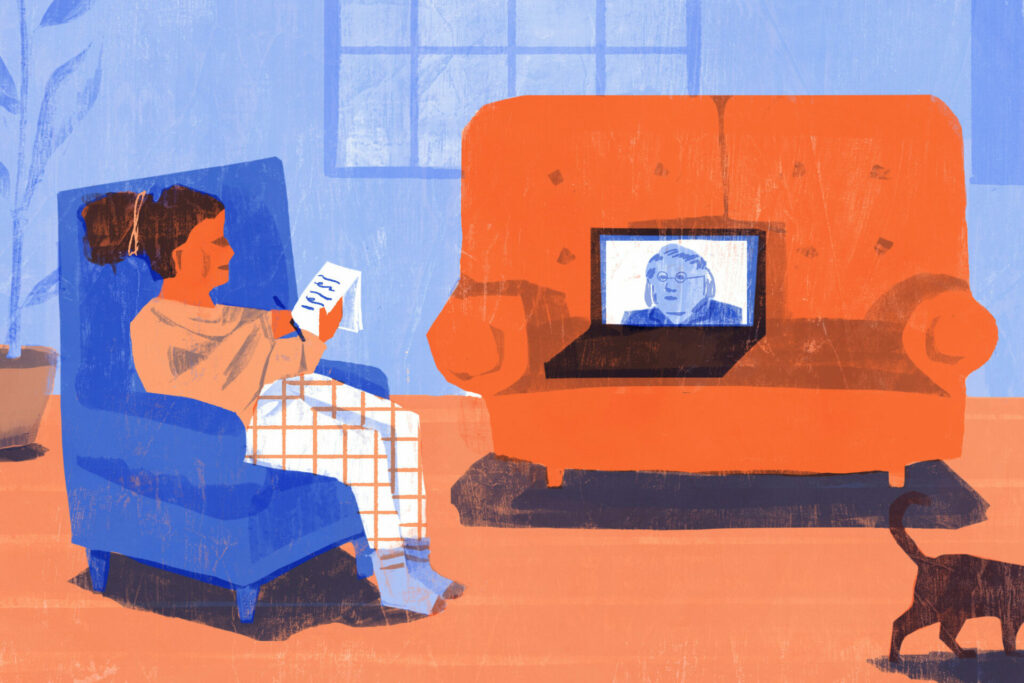If you’re feeling lost and uncertain about your future, you may want to consider AEDP therapy. This unique form of psychotherapy can help you understand yourself better and find the path that is right for you. AEDP therapy can help you regain control of your life and start moving in the direction that you want to go. In this blog post, we will discuss what AEDP therapy is and how it can help you.
Contents
What Is AEDP Therapy?

AEDP is a form of experiential psychotherapy that focuses on helping people feel better by processing and understanding emotions. The therapy is based on the idea that emotions are natural and necessary, but they can become problematic when they’re not dealt with healthily.
AEDP therapists use several techniques to help their clients process emotions, including talk therapy, art therapy, and music therapy. The goal of AEDP therapy is to help people understand and accept their emotions so that they can move on from them in a healthy way.
This type of therapy is also sometimes called “accelerated experiential dynamic psychotherapy” or “AEDP.”
What Does AEDP Therapy Treat?
AEDP therapy is a relatively new type of therapy, but it has shown promise in helping people deal with a variety of issues, including:
Anxiety
One of the most common issues that AEDP therapists treat is anxiety. Anxiety disorders are characterized by feelings of fear, worry, and unease that can be so severe that they interfere with a person’s ability to function in their daily life.
AEDP therapy is an effective treatment for anxiety disorders. In one study, people who underwent AEDP therapy showed significantly reduced levels of anxiety and depression compared to those who did not receive the therapy.
Depression
Depression is another common issue that AEDP therapists treat. Also, Depression is a mental health disorder that is characterized by persistent feelings of sadness and emptiness. It can also cause physical symptoms, such as fatigue and insomnia. Depression can make it difficult for a person to function daily.
AEDP makes use of the therapeutic relationship to help people with depression. The therapist works to create a safe and supportive environment where the client can explore their feelings. AEDP therapists also use techniques such as experiential work and emotional processing to help clients understand and work through their emotions. Through this process, clients can begin to heal from their depression and start to live a more fulfilling life.
PTSD
An estimated 3.5% of adults in the world have post-traumatic stress disorder (PTSD). PTSD is a mental health disorder that can occur after a person has experienced or witnessed a traumatic event. Symptoms of PTSD include flashbacks, nightmares, anxiety, and avoidance of anything that reminds the person of the trauma.
AEDP is a type of therapy that can help people with PTSD. AEDP stands for Accelerated Experiential Dynamic Psychotherapy. This type of therapy uses a combination of techniques to help the person process their trauma and heal from it. These techniques include both talk therapy and experiential methods such as eye movement desensitization and reprocessing (EMDR) and Somatic Experiencing (SE).
AEDP is an effective treatment for PTSD. In one study, 70% of people who received AEDP therapy no longer met the criteria for PTSD after 12 sessions. And in another study, 84% of people who received AEDP therapy had a decrease in symptoms after 6 sessions.
Techniques of AEDP Therapy

Many techniques are used in AEDP therapy. One of the most common is experiential work. This involves the therapist and patient working together to process emotions and experiences in the present moment. This can be done through a variety of activities such as role-playing, art, or movement. Other techniques that may be used in AEDP therapy include:
Cognitive Restructuring
One of the most common techniques used in AEDP therapy is cognitive restructuring. This involves helping the patient to identify and challenge negative thoughts and beliefs that are contributing to their distress. The therapist will work with the patient to develop more realistic and positive ways of thinking about themselves and their experiences.
Emotional Regulation
Another common technique used in AEDP therapy is emotional regulation. This involves helping the patient to manage their emotions more effectively. The therapist will teach the patient skills such as relaxation, deep breathing, and mindfulness meditation. These skills can help the patient to better cope with difficult emotions and reduce stress levels.
Interpersonal Effectiveness
Interpersonal effectiveness is another key component of AEDP therapy. This involves helping the patient to develop a healthier and more effective way of relating to others. The therapist will teach the patient how to communicate assertively, set boundaries, and constructively resolve conflict.
Self-Exploration
Self-exploration is another important part of AEDP therapy. This involves helping the patient to get in touch with their own emotions and experiences. The therapist will encourage the patient to express their thoughts and feelings openly and without judgment. This can be done through journaling, free association, or dream work.
These are just some of the techniques that may be used in AEDP therapy. Each patient will be different and the therapist will tailor the treatment plan to meet the individual needs of the patient.
Working on AEDP Therapy

The working of AEDP Therapy has been based on the premise that humans are innately resilient and have a natural tendency toward growth and healing. The therapist uses an experiential, emotion-focused approach to help clients access their core emotional truths and transform stuck points in their lives.
AEDP therapists aim to create a safe and supportive environment in which clients can feel seen, heard, and understood. They help clients to identify and process emotions that may be causing distress or blocking progress. Through this process, clients can develop a greater understanding of themselves and learn new ways of relating to others.
Throughout the working of AEDP Therapy, the therapist continually assesses a client’s emotional state and level of safety. This helps to ensure that the therapy is proceeding at a pace that is comfortable for the client. The therapist may also use other techniques, such as mindfulness or cognitive behavioral therapy, to help clients achieve their goals.
AEDP therapists aim to create an environment of warmth, acceptance, and compassion. They believe that emotions are valuable information that can be used to heal and grow. If you are seeking a therapist who will truly listen to your story and help you explore your emotions, AEDP therapy may be right for you.
Benefits of Taking AEDP Therapy

Several benefits come with taking AEDP therapy. This type of therapy can help you to learn how to regulate your emotions, cope with stress, and heal from trauma. Some of these other benefits are:
Understand Their Emotions Better
One of the main benefits of AEDP therapy is that it can help you to better understand your emotions. This is because the therapist will help you to identify your emotions and label them in a way that makes sense to you. This can be very beneficial for people who have a hard time understanding their own emotions or who tend to bottle them up.
Learn How To Cope With Stress
AEDP therapy can also help you to learn how to cope with stress more effectively. This is because the therapist will teach you different techniques that you can use to deal with stressors in your life. These techniques can include things like relaxation techniques, journaling, and deep breathing exercises.
Heal From Trauma
Another benefit of AEDP therapy is that it can help you to heal from trauma. This is because the therapist will help you to process your emotions and work through any trauma that you have experienced. This can be very beneficial for people who have experienced a traumatic event or who suffer from post-traumatic stress disorder.
Accept Their Emotions
One of the final benefits of this therapy is that it can help you to accept your emotions. This is because the therapist will help you to understand that your emotions are normal and that they are okay to feel. This can be very beneficial for people who tend to bottle up their emotions or who have a hard time accepting them.
Makes You More Resilient
AEDP also makes you more resilient to stress. This is because the therapist will help you to understand your emotions and how to cope with them healthily. This can be very beneficial for people who tend to react to stressors in their life in an unhealthy way.
Conclusion
AEDP therapy is a type of therapy that is based on the principles of affective neuroscience and focuses on helping individuals heal from traumas. This therapy is effective in treating a variety of mental health conditions, including post-traumatic stress disorder, anxiety, and depression. If you are considering AEDP therapy, it is important to find a therapist who is trained in this approach and who you feel comfortable with.
Hope this article was of help to you! If you are suffering from mental health disorders, you may seek help from Therapy Mantra. We have a team of highly trained and experienced therapists who can provide you with the tools and skills necessary for overcoming mental health disorders. Contact us today to schedule an online therapy or download our free Android or iOS app for more information.


